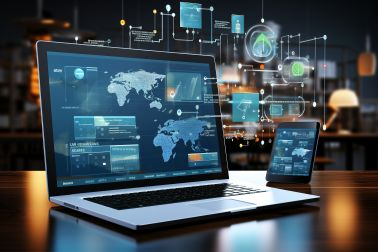Chen Xiaoli2024-05-30 13:38:03iThome

Among them, AI servers are computer systems designed to perform complex AI tasks, such as deep learning, machine learning or data analysis. They are equipped with high-performance processors, GPUs and dedicated AI accelerators to cater to the intensive nature of AI algorithms. Computing requirements can be divided into AI data, AI training, and AI inference.
According to statistics from market research firm Global Market Insights , the global AI server market size will be US$38.3 billion in 2023. It is expected to grow at an average annual rate of 18% from this year to 2032 until it reaches US$177.4 billion in 2032.
Another research institution , TrendForce , said that global server shipments this year are expected to grow by 2.05%, reaching 13.65 million units, of which AI servers account for 12.1%, and the AI servers of various manufacturers Shipments are expected to grow by double digits this year.
Market.us is more optimistic. The company estimated that the global AI server market size last year was US$31 billion, of which 39% of servers were used to perform AI training. From this year to 2033, the average annual growth rate of this market will reach 30.3%, reaching a scale of US$430 billion in 2033.
In addition to the AI servers used by enterprises or organizations, consumer devices have also entered the AI era. According to IDC's definition , a hardware-supported AI PC refers to a PC that contains a neural processing unit (NPU) to perform specific AI functions on the device, but the computing power of its NPU is less than 40 trillion operations per second (TOPS). , are chips currently being shipped; the new generation of AI PC should include an NPU with 40 to 60 trillion operations per second, and an AI-first operating system; while high-end AI PCs should have more than 60 TOPS computing power is expected to appear in the next few years.
The Copilot+ PC recently released by Microsoft meets IDC's definition of a new generation of AI PC. It can achieve more than 40 trillion operations per second, supports all-day battery life, and can also access the most advanced AI models to unlock more function.
Tom Mainelli, IDC Group Vice President responsible for device and consumer research, pointed out that industry players will take advantage of faster performance, lower inference costs, and on-device security and privacy advantages to realize the promise of improving user productivity, which will be seen this year. AI PC shipments have begun to increase, and AI PCs will move from niche to mainstream in the next few years. By 2027, the shipment volume of new generation AI PCs will be twice that of hardware-supported AI PCs.
The three main reasons for moving AI tasks from the cloud to the client are to improve performance by eliminating data round-trips, to enhance privacy and security by keeping data on the device, and to reduce the cost of accessing cloud resources.
Overall, AI PC shipments are expected to increase year by year from nearly 50 million units in 2024 to more than 167 million units in 2027, when AI PCs will account for nearly 60% of global PC shipments. In fact, Qualcomm Chief Communications Officer Clare Conley once pointed out that the PC market will undergo a transformative change this year due to the emergence of AI PCs and the fact that this year and next year will coincide with the super cycle of laptop replacement. According to Financial services company Morgan Stanley predicts that 40% of laptops will need to be replaced this year, and this will grow to 65% next year. These two major demands will drive a new era of PCs.
AI will not only migrate from the cloud to PCs, but will also migrate to smartphones for the same reason. Morgan Stanley analyzes that as generative AI is embedded into devices, edge AI (Edge AI) will allow consumers to see new features, and mobile phone manufacturers will see sales growth.
Morgan Stanley expects the trend of edge AI to drive smartphone sales in the next two years, reversing the slowdown since 2021. It estimates that shipments will grow by 3.9% this year and 4.4% next year.
Morgan Stanley also listed possible killer applications of edge AI, including continuously sensing camera lenses that can detect whether the user is looking at the screen without touching it, and automatically unlock or lock the screen. ; or provide gesture control when the user cannot hold the device; provide professional-level photography capabilities that can automatically fine-tune or modify picture elements; and smarter voice assistants, etc. New applications enabled by new hardware may trigger new hardware product cycles, thereby increasing sales.
Declare:The sources of contents are from Internet,Please『 Contact Us 』 immediately if any infringement caused